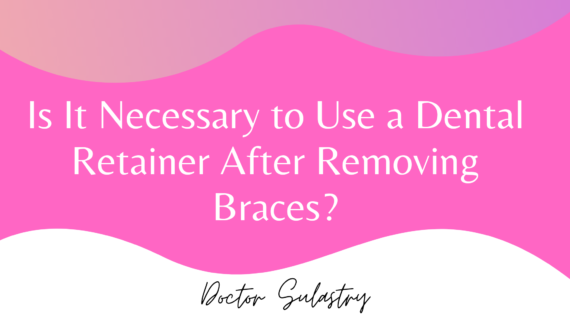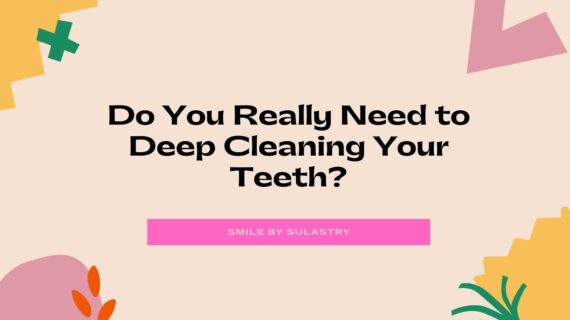Dental Retainer After Removing Braces? Maybe you or some people will feel uncomfortable because they have to use another tool in their mouth. It’s because you using the braces to deal with messy teeth. After that, you are usually recommended to use a dental retainer after removing braces soon.
Actually, do you really need a dental retainer? Then, what should be considered when choosing this dental retainer?
Also Read Foods That You Can and Can’t Eat After Wearing Braces
Why do you need a dental retainer?
The most common reason why you need to wear a retainer is to maintain the position of the newly repaired tooth.
This applies if you have just finished with braces to keep your teeth in their proper position.
The function of this dental retainer is very important in the process of straightening your teeth. Reporting from the Oral Health Foundation, dental retainers will hold the tooth structure that has been fixed with braces. Then your gums and teeth will begin to adapt.
If you don’t apply this method, your teeth that have been straightened with braces can shift again later. This can make your previous use of braces useless. And later will cause a condition called relapse.
Usually the doctor will determine how long a person should use this dental retainer. Some use it for three months, a year, or maybe more than that. It could also be, some are instructed by the doctor to use a retainer throughout the day or a certain time, depending on the dental problems you are experiencing.
How to choose the right dental retainer for you?
For the problem of the type of retainer that should be used, you should first discuss it with your dentist. Everyone needs a different dental retainer.
This can be from the type, duration of use, and position of use. There are retainers that are used in front, but there are also those that are used behind the teeth so they are not too visible. This what type of dental retainer that can you use depends on the dentist recommendations :
1. Self-detachable retainer
This is the type of retainer that you come across a lot. Because this dental retainer is removable. Dental retainers like this will be easier to clean after you eat. Because, you can remove it first when you want to eat and clean it directly.
However, higher awareness is needed to use this model of dental retainer. Although this can make it easier for you, there are also disadvantages:
- It can be lost if you don’t store it properly.
- Easily damaged if left lying carelessly.
- Causes excessive saliva production or hypersalivation.
- Bacteria are more prone to grow on it because the retainer will often go in and out of your mouth later.
Although this dental retainer has its drawbacks, it will be easier for you to keep this type of retainer clean than others. The main problem with using this type is that you often forget or don’t use it regularly. Of course it can make teeth that have been trimmed messy again.
2. Permanent dental retainer
This permanent retainer consists of solid wire braided in a curve to conform to the exact shape of your teeth. These retainers are also known as lingual wires or bonded retainers. This type of retainer cannot be removed by yourself except by your dentist.
Dentists say, the potential for teeth to fall apart will be smaller if you use this permanent retainer. Because, this retainer will not be removed by using it too often and is always attached to the teeth to maintain the position of the teeth intact.
Dental retainer materials that you may often seen
You should also recognize the commonly used retainer materials and materials. Consult a dentist or orthodontist to find out the right type according to your condition.
1. Wire retainer
Even though it’s made of wire, this retainer can still be removed. This retainer is made of thin metal wire and has a slight mixture of plastic and acrylic. This wire retainer will be used along the lower teeth as well as the upper teeth.
Benefits:
- Can be adjusted in more detail or better to the position of the teeth than other types of retainers.
- More durable.
- Can last for years if cared for properly.
Weakness:
- The use of this type of dental retainer slightly affects your ability to speak. That’s because there is a foreign object in the mouth.
- The wire can irritate your lips and cheeks so proper precautions are necessary.
You can also choose this type of wire dental retainer which is transparent. This applies if you don’t want to use colored ones.
2. Plastic retainer
Plastic retainers include the type that can be removed and installed by yourself as well. These dental retainers are also often referred to as vacuum retainers, or thermoplastic retainers. These retainers are molded to match the new position of your teeth after using braces.
Because of their transparent shape and color, plastic retainers are often confused with Invisalign. However, Invisalign has a function like braces and the material is more flexible than this transparent retainer.
There are three brands of dental retainers that are most widely used by people, namely Vivera, Essix, and Zendura. These plastic retainers have become more popular and are often used compared to wire retainers.
Benefits:
- Not very visible because the color is transparent.
- Feels more comfortable than the wire type because the material is not too thick.
- Doesn’t really affect your speech.
Weakness:
- If it is damaged, broken, or cracked, it cannot be repaired and must be replaced altogether.
- Can warp if exposed to hot sun.
- The more often it is used, the transparent color may change.
Conclusion
To find out which type is good and suitable for you, discuss with your doctor and adjust it to the budget you have. The retainer you choose must be right, because you will be using it for a long time, maybe even years.
In addition, you are also advised to have regular check-ups with the dentist to find out whether the retainer needs to be repaired or made new. If it is damaged or cracked, consult your dentist immediately.

